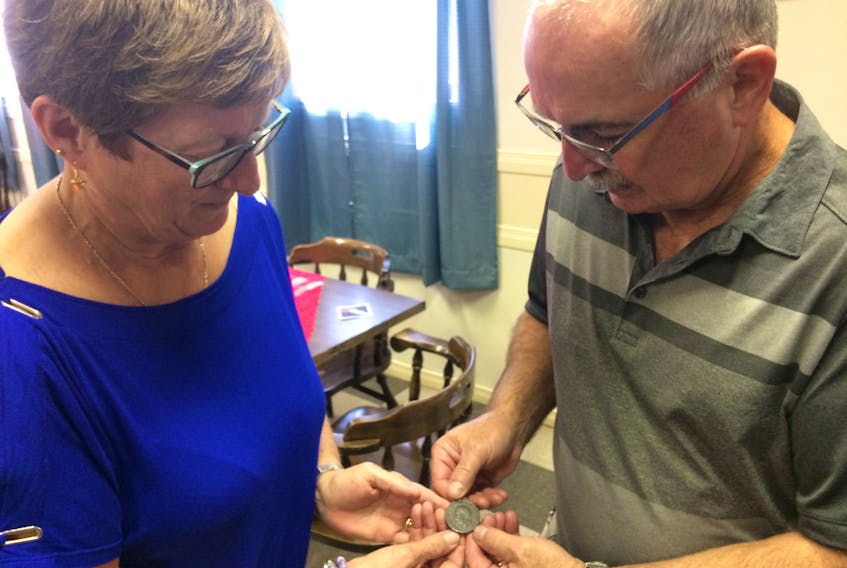JOGGINS, N.S. - The beach at Joggins is well known for its fossils, less so for war medals.
What began as some time on the beach with his metal detector turned into quite the find for Dean Brown. Brown was on the beach at Lower Cover near Joggins with his wife while she scoured the beach for sea glass. As she was finishing up, he decided to take a quick sweep through a secluded area of the beach.
“I found a few coins and some pennies on the beach area and Wendy said she had enough and that we should get going,” Brown said. “I told her I was going to take a quick sweep around the corner and then go up to the car. I wasn’t really paying attention because I was getting ready to leave and all of a sudden the detector went off and lying on the surface was this medal. It was unusual because things like that are never usually on the surface, they’re usually several inches down.”
What he found was a British War Medal from the First World War. Brown said it appeared as though the medal had been lying there for many years, or could have been moved there by the extremely high tides the Bay of Fundy and Joggins are famous for.
After picking it up, he showed it to the wife and the pair Googled what they could find about the medal, but a day later his wife, Wendy, suggested taking it to the Fundy Geological Museum in Parrsboro where their children worked.
“I knew they had a high-powered microscope there so went to the museum to see if they could help us,” she said. “The museum offered to help and with the help of the microscope we were able to make out H. O’Regan, but we couldn’t find out anymore information about him.”
They started looking at cenotaphs and couldn’t understand why his name wasn’t listed until they realized that he had actually survived the war. That’s when they turned to the Joggins branch of the Royal Canadian Legion and Doug and Darah Legere.
Dara Legere said he and his brother researched Harold O’Regan, but could find no family members the Browns could give the medal to. What they did discover is that O’Regan would die in a mining accident 15 years after the war in 1933 and is buried in the cemetery at Ragged Reef.
The Browns offered the medal to the legion and the Legeres said they would put it in a shadow box with his name and display it at the branch along with war medals from other Joggins veterans.
“It’s another piece of Joggins’ war history that we can display for future generations to see,” Doug Legere said. “When you look around the legion you can see displays of other veterans who served and it’s great to be able show this one.”
Dara Legere said his research discovered that O’Regan enlisted in February 1916 and was sent over to England for training before being dispatched at France following the Battle of Vimy Ridge.
He was originally a member of the 193rd Battalion before being moved to the Fourth Pioneer Battalion that would have been put to work digging tunnels, laying telephone wires and other jobs.
“It’s sort of ironic that a lot of people went to war to get out of the mines, but once they got there and they found out about their mining experience they were often put back underground digging tunnels,” Dara said.
He’s not sure what battles he would’ve fought in, but the time of his arrival in France after Vimy would’ve coincided with the fight for Arras and later the 100 Day Offensive at Amiens and Cambrai.
Following the armistice, O’Regan remained in France until early 1919 before making his way back to Nova Scotia via England, disembarking at Halifax in May of that year.
It’s a big year for Joggins as it plans to celebrate the 100th anniversary of the end of the First World War by adding 10 names to its cenotaph of veterans who lost their lives during or just after the war from their wounds, but for some reason were never included in the memorial when it was erected in 1948.
Twitter: @ADNdarrell









